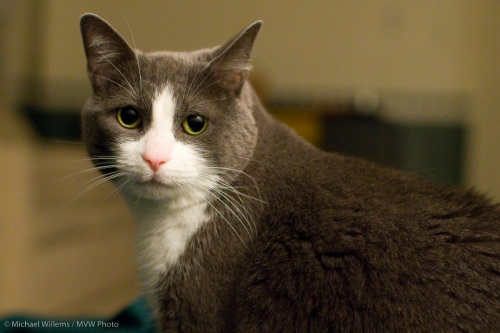This is what the cat looks like, when shot using my 7D, hand-held using the 35mm f/1.4L lens in available Tungsten light, slightly cropped, at 3200 ISO:
I am not going through the trouble of showing the full crop because I want to make a point. And that point is: we often over-analyse. As you see here, indoors, low light, 3200 ISO with a fast lens, and you get images that look great at 1200 pixels wide and in a moderate-sized print.


Well said. And don’t forget to resharpen after resizing.
Do you have any old DSLRs in your attic? It would be interesting to compare the highest-ISO performance of, say, the EOS-10D with the 7D. If you can get the cat to sit still for long enough.
That’s where the manufacturers do their truly admirable stuff – sensor design and manufacturing.
It’s one thing to make a great sensor in the lab – another to manufacture it in the thousands with consistent quality.
I note though that there must be significant sample differences between different cameras of the same model. LR has an option that I have never used “Make default develop settings specific to camera serial number”. Have you experience with this?
Yes, in fact I’ve used it… my 1Ds3 and 1D3 use ever so slightly different settings upon import.
And yes re sensors. You know, the camera, while the picture is being taken, consists of just two things:
1. sensor
2. lens
The rest is ancillary.
What do you think of this comparison of the 7D with 2 other Canon DSLRs and even a P&S: http://darwinwiggett.wordpress.com/2009/11/11/the-canon-7d/
The results seem surprising. Unless there’s something wrong with their testing methodology. I don’t think they are over-analyzing the pictures.
I’m not sure what Darwin is seeing. I;m seeing crisp, albeit a tad noisier than my 1Ds MkIII – but at the ISOs I shoot at, that’s of little consequence. And the advantages to me outweigh all that. Focus, movie, ability to drive flash, new better controls: all big benefits.
Pingback: Another 7D review « Michael Willems Daily Photography Blog